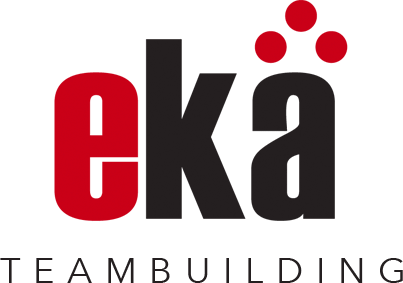
Strong teams grow when people trust one another, listen attentively, and work toward shared goals. Teams today don’t always gather in the same room. Some connect through screens, while others meet in offices. Every team works differently, so the way they grow closer also changes.
Some teams gather online, others face-to-face. Choosing between these two mediums depends on how the team communicates and what their objective is. This guide walks through each method and helps us understand which one helps teams bond, cooperate, and build stronger work relationships.
Understanding Team Building in the Modern Workplace
Today’s workplaces stretch across many locations. Some team members meet in offices. Others work from homes or different cities. Because of this shift, team building has taken on new meaning. It involves clear communication, shared activities, and mutual respect. These actions help people understand one another and work better as a group. A well-planned team building workshop, whether online or in person, lifts energy and creates a stronger connection among teammates. When people feel included, they move together toward success.
What is Virtual Team Building?
Virtual team building gathers team members online. They join through video calls, chat through screens, and complete tasks using tools or apps. These sessions help people speak up, solve puzzles, and enjoy shared activities without meeting in person.
People from many locations can link through these digital moments. They play online team-building games, complete challenges, or build group projects. These activities help every teammate feel connected and stay engaged. Remote team building allows people to remain part of a team no matter where they work.
What is In-Person Team Building?
In-person team building invites everyone to gather in the same place. Teammates move together through hands-on activities. They speak face-to-face and understand one another better by noticing expressions and body language.
This type of teamwork builds deeper trust. People react quickly, offer help, and learn how others work. Tasks involve movement, tools, or group effort. These sessions shape a strong team by giving members space to work side by side and strengthening their teamwork in real time.
Key Differences Between Virtual and In-Person Team Building
| Feature | Virtual Team Building | In-Person Team Building |
| Location | Connects people from anywhere | Happens in a shared physical space |
| Tools Needed | Devices, apps, internet | Materials, venue |
| Physical Interaction | Uses digital touchpoints | Offers real face-to-face moments |
| Engagement Style | Relies on screens and online tools | Involves movement and hands-on actions |
| Travel or Setup Required | Needs little setup or travel | May include preparation and coordination |
Benefits of Each Approach
Virtual Team Building
- Builds Team Unity Across Distances
People from many places join without travelling. Everyone connects, speaks, and shares ideas through digital sessions. These events spark teamwork, even when teammates don’t work in the same place. Remote team building helps members feel included, no matter where they are.
- Fits into Busy Workdays
Virtual activities don’t take up too much time. Teams can squeeze them into short breaks or free parts of the day. This style fits teams with packed calendars and allows for bonding without complex planning.
In-Person Team Building
- Strengthens Communication in Real-Time
When people speak face-to-face, they understand each other better. Voice tone, gestures, and eye contact help make ideas clear. These activities improve how people explain thoughts, react, and respond to others.
- Forges Trust Through Shared Movement
In-person tasks often involve group efforts. Whether building, solving, or creating something, teammates rely on one another. These shared actions develop stronger bonds and trust between teammates.
Choosing the Right Team Building Method for Your Company
1. Understand How the Team Works
Study whether teammates work from home, the office, or both. If most people join online, digital events match better. If they meet often, in-person sessions may build stronger relationships.
2. Check Time and Cost Limits
Virtual programs often cost less and take less time. In-person events may need venues, travel arrangements, and materials. Pick what fits within the budget and schedule.
3. Match Format with Team Goals
If the goal involves clearer speaking or tighter trust, in-person works well. If the team simply needs to stay in touch and connect often, online may work better.
4. Ask for Team Input
Allow team members to share what they enjoy. Some like screen-based sessions. Others prefer real-world activities. Their opinions guide better planning and create more interest in joining.
Examples of Activities for Each Type
Virtual Team Building Activities
Teammates use apps to solve puzzles, answer quizzes, or complete IQ questions in a team. These online team-building games create moments of cooperation and help people stay connected through screens. They sharpen thinking and allow quick responses in fun, organized ways.
In-Person Team Building Activities
Teammates gather for physical tasks or group projects. They walk, build, or solve problems together. These activities connect people naturally. Many outdoor team-building games also create chances for real connection, movement, and laughter in a shared space.
Best Practices for Successful Team Building
Pick activities that help the team grow stronger, not just stay busy. Whether choosing virtual team building or an activity outdoors, make sure everyone can take part fully. Focus on fairness, teamwork, and positive group results. Let people connect naturally while solving tasks or sharing ideas.
Conclusion
Both styles, remote and in-person, help build better teams when chosen with care. Remote team building supports people who work from different locations. In-person events create memorable moments of trust and teamwork. The best method depends on the team’s setup, time, and needs. Many companies now use skilled planners to shape team events that match their workplace. Whether online or face-to-face, team building strengthens the group, boosts collaboration, and helps everyone work better together.
